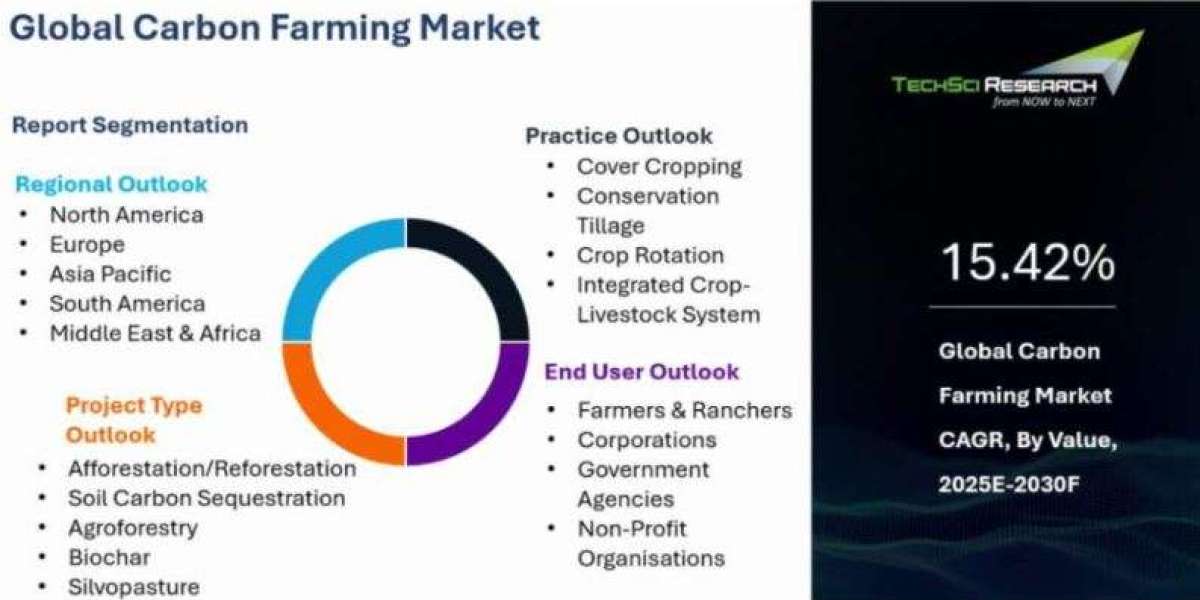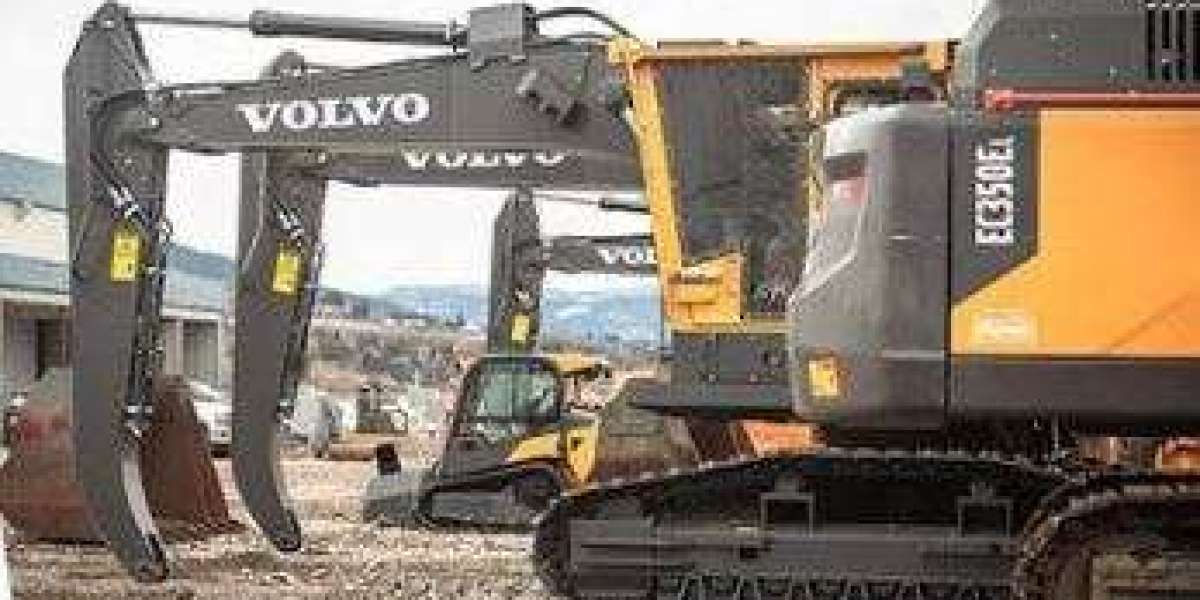According to the TechSci Research report titled “Carbon Farming Market – Global Industry Size, Share, Trends, Competition Forecast & Opportunities, 2030F”, the Global Carbon Farming Market was valued at USD 538.04 million in 2024 and is projected to reach USD 1,273.72 million by 2030, growing at a CAGR of 15.42% during the forecast period. This robust growth is fueled by the increasing global focus on sustainability, climate resilience, and environmental accountability in agriculture.
Carbon farming refers to a collection of agricultural methods aimed at reducing greenhouse gas emissions and enhancing carbon sequestration in soils and vegetation. As climate change intensifies, these practices are gaining widespread attention as viable solutions to support both environmental goals and farm-level profitability. Governments, environmental organizations, and the private sector are aligning efforts to incentivize and promote carbon-conscious agriculture, contributing to the growing adoption of carbon farming worldwide.
Growing Recognition of Soil Health and Sustainability
One of the key drivers of the market is the growing awareness of the role agriculture plays in mitigating climate change. Traditional farming practices often lead to soil degradation, carbon loss, and greenhouse gas emissions. In contrast, carbon farming practices like cover cropping, no-till farming, crop rotation, and agroforestry not only improve soil health but also capture atmospheric carbon dioxide, storing it in the soil as organic matter.
Governments are increasingly offering carbon offset programs and incentive-based schemes to reward farmers for adopting these practices. Such programs help generate carbon credits, which can be sold on voluntary or compliance carbon markets, creating a new income stream for farmers. These financial incentives are encouraging producers to transition to more climate-smart methods.
The Role of Technology in Carbon Farming
The rapid adoption of precision agriculture technologies is transforming the carbon farming landscape. Innovations such as remote sensing, GIS-based mapping, soil carbon monitoring tools, and AI-powered farm analytics are making it easier for farmers to implement, track, and validate carbon sequestration efforts. These tools allow for more accurate reporting of soil organic carbon levels and facilitate participation in verified carbon markets.
Furthermore, blockchain and digital ledger technologies are being introduced to ensure transparency and traceability in carbon credit transactions. This technological evolution is bridging the gap between environmental goals and real-world agricultural implementation, driving confidence among stakeholders and encouraging widespread market participation.
Expanding Carbon Credit Opportunities
The expansion of carbon credit trading platforms and increased corporate demand for carbon offsets is creating new opportunities in the carbon farming market. As more companies commit to net-zero emissions targets, they are turning to agriculture-based carbon removal projects to offset their unavoidable emissions. This dynamic is fostering partnerships between carbon credit certifiers, agricultural firms, and tech companies, unlocking more funding for regenerative agricultural initiatives.
Farmers and agribusinesses are realizing that carbon farming not only contributes to global climate targets but also enhances long-term farm viability through improved soil fertility, water retention, and biodiversity. These ecological benefits are drawing increasing interest from impact investors and green finance institutions, who are actively funding carbon farming pilots and scale-up projects.
Market Segmentation Highlights
By Practice: Integrated Crop-Livestock Systems Lead Growth
Among various practices, the Integrated Crop-Livestock System has emerged as the fastest-growing segment during the forecast period. This system involves the synergistic management of crops and livestock, where each component supports the other. Crop residues serve as livestock feed, while livestock manure enriches the soil, reducing dependence on chemical fertilizers and improving soil structure and microbial activity.
This closed-loop approach enhances nutrient cycling, biodiversity, and carbon storage capacity, making it an effective climate mitigation strategy. Farmers adopting this model benefit from increased productivity, cost savings, and access to carbon credits. Its ability to boost farm resilience against drought and other climate-related challenges makes it particularly appealing in regions facing agricultural uncertainty.
As carbon farming programs evolve, more governments and organizations are prioritizing integrated systems in their sustainability initiatives, further propelling their growth within the market.
Browse over XX market data Figures spread through XX Pages and an in-depth TOC on "Global Carbon Farming Market”
https://www.techsciresearch.com/report/carbon-farming-market/27500.html
By Region: Asia-Pacific Emerging as a Growth Leader
The Asia-Pacific region is poised to be the fastest-growing market for carbon farming globally. This growth is fueled by several interrelated factors:
Large-scale agriculture across nations like India, China, Indonesia, and Vietnam.
Increasing pressure on natural resources due to population growth and urban expansion.
Escalating climate-related threats such as soil erosion, drought, and declining productivity.
Government policies and international collaborations promoting sustainable farming.
Many countries in the region are launching carbon farming pilot programs, introducing agroecological incentives, and aligning agricultural policies with climate action plans. For instance, India has initiated programs that promote natural farming and regenerative practices, while China is investing in smart agriculture and low-emission technologies.
The rising popularity of eco-labeled, sustainably produced foods among Asian consumers is also encouraging agribusinesses to adopt carbon farming for product differentiation and access to premium markets.
Future Outlook
The outlook for the global carbon farming market is highly positive. As the climate crisis intensifies, agriculture is transitioning from being part of the problem to becoming a central part of the solution. With technological integration, favorable government policies, and private sector investment, carbon farming is expected to evolve from a niche practice to a mainstream agricultural model.
Emerging innovations such as biochar applications, microbial carbon enhancers, and digital MRV (Monitoring, Reporting, and Verification) platforms will further refine carbon sequestration capabilities and validation mechanisms. Additionally, as carbon pricing frameworks become more established, the financial appeal of carbon farming will increase significantly.
In conclusion, the global carbon farming market is not only advancing environmental goals but also reshaping the economics of agriculture. With strong momentum across public and private sectors, the industry is set to play a pivotal role in achieving global climate resilience and food security by 2030.
Major companies operating in Global Carbon Farming Market are:
Vayda, Inc.
Terramera, Inc.
Indigo Ag Inc.
Soil Capital SPRL
Agoro Carbon Alliance
Carbon Sequestration Inc.
Agreena Copenhagen
HARADA CORPORATION
Continuum Ag
Robofarm GmbH
Download Free Sample Report
https://www.techsciresearch.com/sample-report.aspx?cid=27500
Customers can also request for 10% free customization on this report
“The Global Carbon Farming Market is expanding due to the increasing collaboration between agricultural institutions, NGOs, and governments to promote sustainable farming practices. These partnerships are facilitating the transfer of knowledge, technology, and resources to farmers, especially in developing regions, where access to such tools has been limited. Through training programs and funding, these collaborations are accelerating the adoption of carbon farming techniques, helping farmers transition to practices that enhance carbon sequestration while improving farm productivity. The collective efforts of these stakeholders are also fostering a supportive policy environment, making carbon farming more accessible and scalable.,” said Mr. Karan Chechi, Research Director of TechSci Research, a research-based management consulting firm.
“Carbon Farming Market - Global Industry Size, Share, Trends, Opportunity, and Forecast, Segmented By Project Type (Afforestation/Reforestation, Soil Carbon Sequestration, Agroforestry, Biochar, Silvopasture), By Practice (Cover Cropping, Conservation Tillage, Crop Rotation, Integrated Crop-Livestock System), By End User (Farmers & Ranchers, Corporations, Government Agencies, Non-Profit Organisations), By Region and Competition, 2020-2030F”, has evaluated the future growth potential of Global Carbon Farming Market and provides statistics & information on market size, structure and future market growth. The report intends to provide cutting-edge market intelligence and help decision makers take sound investment decisions. Besides, the report also identifies and analyzes the emerging trends along with essential drivers, challenges, and opportunities in Global Carbon Farming Market.
Contact
TechSci Research LLC
420 Lexington Avenue, Suite 300,
New York, United States- 10170
Tel: +1-332-258-6602
Email: [email protected]
Website: www.techsciresearch.com



